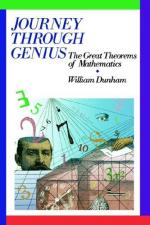
|
| Name: _________________________ | Period: ___________________ |
This quiz consists of 5 multiple choice and 5 short answer questions through A Sampler of Euler's Number Theory.
Multiple Choice Questions
1. Which of the following demonstrates the successive squared denominator series?
(a) 1 + 1/2 + 1/3 + 1/4 + 1/5 . . . 1/1000 . . .
(b) 1 + 1/4 + 1/9 + 1/16 . . .
(c) 1 + 1/2 + 3/4 + 4/5 . . .
(d) 1 + 1/2 + 1/6 + 1/10 + 1/15 . . .
2. What is the name for determining the area of an enclosed space by constructing a square of equivalent area?
(a) Triangulation.
(b) Quadrature.
(c) Square root.
(d) Cubation.
3. Which of the following becomes an important definition in mathematics that was first presented in Elements?
(a) 180 degree angle.
(b) Parallel line.
(c) Circle.
(d) Intersection.
4. Who challenged Tartaglia to a contest to solve cubic equations?
(a) Fior.
(b) Pacioli.
(c) del Ferro.
(d) Cardano.
5. What is true about the successive squared denominator series proposed by the Bernoullis?
(a) The sum diverges into infinity.
(b) The sum converges.
(c) The sum diverges.
(d) The sum converges to 2.
Short Answer Questions
1. Which of the following was one of Gauss' early discoveries?
2. Who acted as the gate keepers of knowledge?
3. What instruments did the Greeks use to square a shape?
4. What did Dunham consider extraordinary about the Elements?
5. Which was true of Euclid's number theory?
|
This section contains 251 words (approx. 1 page at 300 words per page) |

|




